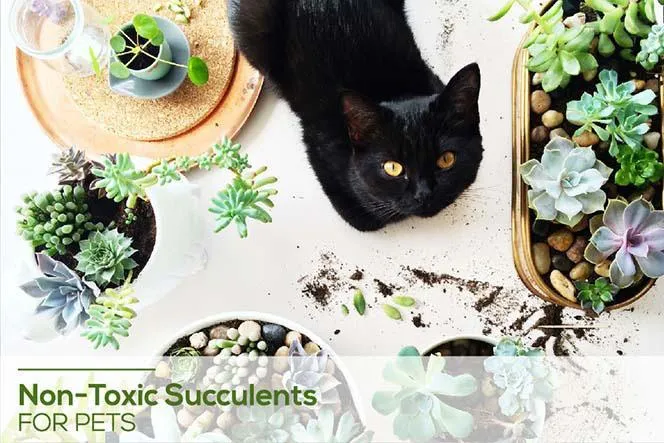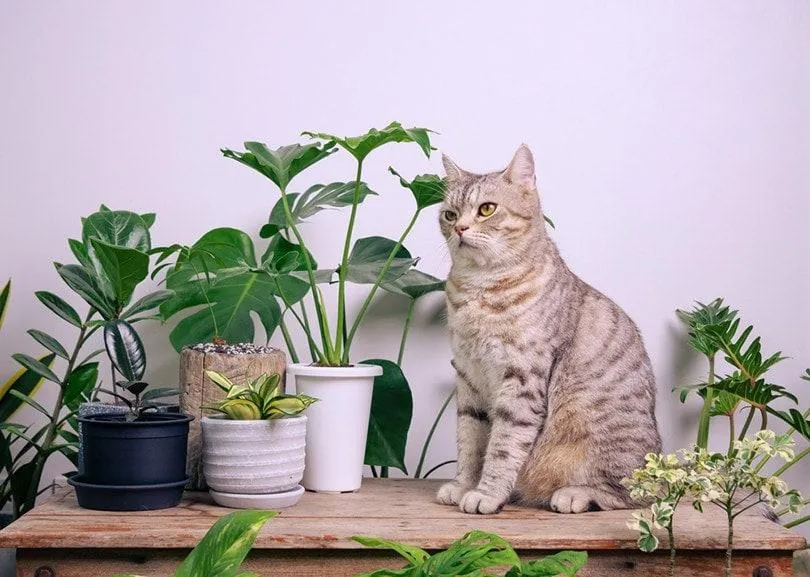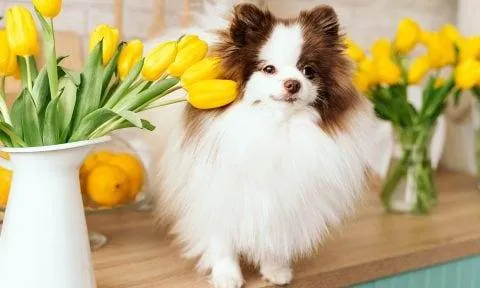Are Philodendrons Safe for Your Pets?
If you have furry friends at home, it’s important to consider whether the plants you bring indoors could potentially harm them. Many common houseplants are toxic to dogs and cats if ingested. In this article, I’ll explore the safety of keeping philodendrons around pets.
Philodendron Toxicity
While philodendrons can make beautiful additions to home decor, it’s crucial to understand their toxicity risks before integrating them into a pet environment. Most varieties of philodendron contain calcium oxalate crystals in their sap and leaves. Ingesting these crystals can cause irritation and inflammation in a pet’s mouth and digestive tract. Severe cases may require medical treatment.
From my experience as a veterinarian, the amount ingested plays a big role in determining the severity of reaction. A nibble here and there may produce only mild discomfort. But chomping down on large philodendron leaves or stems increases the toxin dose and ups the chance for more serious illness. Symptoms can include drooling, vomiting, diarrhea, abdominal pain, and swelling of the tongue and lips.
Assessing Risk for Your Pet
When deciding if a philodendron is an appropriate plant for your home with pets, consider several risk factors:
- Your pet’s size – Larger dogs are less likely to ingest an entire leaf compared to smaller pets with more access.
- Your pet’s behaviors – Chewers or explorers will find it harder to resist nibbling vegetation than less curious pets.
- Plant location – Keeping philodendrons high up reduces access. Tabletop placements invite trouble.
- Pet supervision – Leaving curious pets alone with plants allows more opportunities for ingestion versus supervised interactions.
I’ve found it also helps to think back on past experiences. Have you noticed your pet sniffing or nibbling other houseplants before? Such signs increase the chance they maysample a new philodendron as well. Overall, the lower the plant’s accessibility and allure as a snack, the safer it will generally be.
Philodendron Varieties and Toxicity
Not all philodendron species pose the exact same risks. Certain types tend to contain higher concentrations of calcium oxalate crystals. Here’s a breakdown of some common varieties and their estimated toxicity levels:
Heartleaf Philodendron (Philodendron hederaceum) – Generally considered one of the lower risk philodendrons. Symptoms are usually mild if ingested.
Split- Leaf Philodendron (Monstera deliciosa) – A very popular houseplant with large iconic split leaves. Calcium oxalate levels make it moderately toxic to pets.
Brazilian Philodendron (Philodendron erubescens) – Its sap contains significant crystal densities, placing it in the more toxic category for pets. Ingestion may produce more serious digestive upset.
Selloum Philodendron (Philodendron selloum) – Produces large rounded leaves that appear very enticing for chewing. Poses higher risks compared to heartleaf varieties.

So in summary, while all philodendrons contain some toxicity, certain species like Brazilian and Selloum philodendrons warrant extra caution if pets will be in contact. Consider safer plant alternatives if risk factors are high.
Minimizing Access and Exposure
Even so-called “low risk” philodendron varieties still have the potential to cause problems if ingested in large amounts. The best defense is preventing access whenever possible. Here are some approaches I’ve seen work well:
– Mount plants high out of reach on walls or hanging baskets rather than tabletops.
– Use top-heavy pots that won’t easily tip if nudged. Wide, low bases help stability.
– Place physical barriers like baby gates around plant areas until pets understand boundaries.
– Trim away any loose, dangling leaves that could tempt chewing from below.
– Keep plants out of rooms where pets spend lots of unsupervised time, like bedrooms.
– Thoroughly sweep or vacuum under philodendron plants frequently to remove any dropped leaves or crystals before pets find them.
With a layered prevention strategy like these multiple safeguards, you’ve got a good chance of keeping curious pets and philodendrons successfully separated in the home. Frequent monitoring also remains important, just in case.
What To Do If Ingestion Occurs
No matter how diligent you are, there’s always a possibility a determined pet may get to a philodendron leaf somehow. Here’s what to do fast if your furry pal munches on a toxic plant:

– Contact your vet right away. Induced vomiting is usually recommended within 2 hours of ingestion to try removing crystals from the gut.
– Check the pet’s mouth for any swelling or irritation as you’re on the way. Note how much was consumed if possible.
– Your vet will assess symptoms and decide if decontamination treatments or observation are needed based on the ingestion level. Induced vomiting, activated charcoal or fluids may be administered.
– Look for signs of drooling, vomiting, diarrhea or abdominal pain over the next few days as crystals may cause delayed symptoms. Return to the vet for any concerns.
– Don’t attempt homemade remedies without veterinary guidance. Professional help gives the best chance of managing toxicity properly.
The good news is that with prompt veterinary care, most mild-moderate philodendron ingestions have good outcomes for pets. But it’s always best to prevent access in the first place through responsible plant placement.
Non-Toxic Alternatives For Pet Owners
If you want foliage accents without toxicity worries, try these pet-safe plant options instead of philodendrons:
– Pothos – A classic trailing vine that’s virtually non-toxic.
– Spider plant – Produces cute miniature plantlets on strong stems held well above reach.
– Peace lily – Surprisingly lush big leaves pose minimal risks.

– Chinese evergreen – Colorful variegated foliage with no reported toxicity issues.
– Snake plant – Spiky succulent leaves aren’t very appealing to nibble.
– ZZ plant – Thick sturdy stems discourage chewing of its waxy leaves.
With so many beautiful pet-friendly plants to choose from, there’s no need to risk potentially harmful species indoors. Consult your local nursery for even more non-toxic recommendations perfect for homes with fuzzy friends.
In conclusion, while philodendrons can thrive as decorative additions, they carry calcium oxalate crystal toxicity risks for cats and dogs if inappropriate contact occurs. With informed precautions and plant placement choices, pet parents can still safely display these trendy tropicals around curious companions. But safer alternatives always offer peace of mind in multi-species households. Let me know if you need any other plant or pet questions answered!
Philodendron Safety Around Pets
| Philodendron Species | Toxicity Level | Symptoms if Ingested |
|---|---|---|
| Philodendron bipinnatifidum | Mildly Toxic | Mouth Irritation |
| Philodendron selloum | Moderately Toxic | Vomiting, Diarrhea |
| Philodendron hederaceum | Moderately Toxic | Diarrhea, Abdominal Pain |
| Philodendron scandens | Low Toxicity | Generally Safe for Pets |
| Philodendron cordatum | Potentially Toxic | Difficult to Digest, Irritation |
FAQ
-
Are philodendrons dangerous for my pets?
Basically, most types of philodendron plants are not too bad for dogs or cats if eaten in small amounts. However, some varieties can potentially cause discomfort or tummy troubles. So it’s best to keep philodendron plants out of reach of pets, just to be safe.
-
What parts of a philodendron are toxic to pets?
The main parts of a philodendron that can be a problem are the leaves and stems. The sap from breaks in the leaves or stems contains calcium oxalate crystals. These crystals could possibly irritate the mouth or cause some pain if a good amount is eaten. Nevertheless, mildcontact is usually not a huge deal for most pets.
-
What are the signs of philodendron toxicity in pets?
Signs may include vomiting, excessive drooling, or stomach upset. More serious poisoning could potentially lead to issues like low blood pressure or even organ damage in severe cases. However, it would take a rather large consumption of plant material to reach that point. So it’s good to monitor your pet if they consume part of a philodendron as a precaution.
-
Should I be worried about my pet being around a philodendron plant?
In most circumstances, no need to freak out if your pet happens to spend time in the same room as a philodendron plant. As long as the plant is out of chomping range, casually being near one is not likely to causeharm. But you might want to consider a different houseplant if your pet has a history of being a nibbler. Better safe than sorry, right?
-
What should I do if my pet eats part of a philodendron?
If your dog or cat ingests a piece of philodendron, don’t panic. Stay calm and contact your vet, who may want to monitor the pet or induce vomiting. Also, be prepared to describe what kind and how much of the plant was eaten. The vet can advise next steps like giving viscous fiber supplements or watching for signs. Chances are, with quick care your furry pal will bounce back just fine.

-
Are some philodendron types safer for pets than others?
It appears that the heartleaf philodendron and Brazilian philodendron have lower levels of calcium oxalate crystals compared to other varieties. So if you must have a philodendron with pets around, perhaps those choices are kind of safer bets. But why risk it, when there are so many interesting plants like pothos or spider plants that aren’t toxic?
-
What are some good non-toxic alternatives to philodendron?
Some other neat houseplants that are classified as safe for pets include English ivy, pothos, spider plants, peace lilies and ZZ plants. Snake plants and bamboo palms are also reported to not cause harm if nibbled. So if you want something lush and tropical-looking without worries, those options could be amazing choices.
